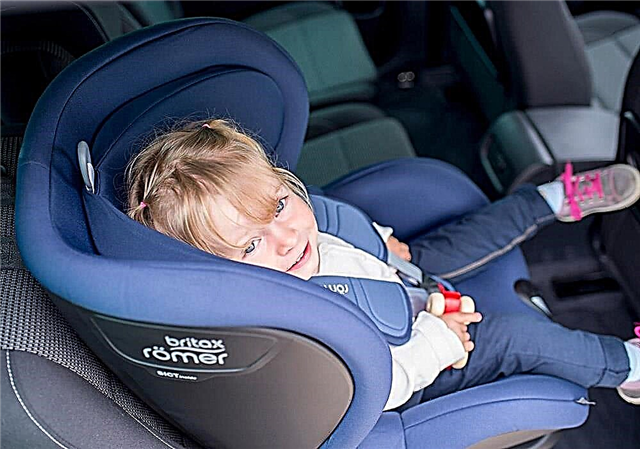
Graphic dictations are interesting drawings in a notebook according to the scheme. The child enthusiastically creates an image that should be the result. And parents, using them, will be able to prepare the child for school and prevent many difficulties that may arise. Let's take a closer look at what it is.

Drawings by cells
With this most interesting, exciting game, which will also contribute to the development of the baby, you will be able to captivate the baby with a long wait in the queue, do not let him get bored on the trip or just have a good time with him at home.
The child draws with great interest in his notebook in the cells. This is precisely its main task in their implementation. It is important to be able to draw the line by following clear instructions. The result of the work will be the resulting image of an object.
Benefit
Graphic dictations are of great help to parents and teachers in preparing their child for school. With the help of them, you can help him avoid the difficulties that students have during learning. Among them are undeveloped spelling vigilance, absent-mindedness, poor concentration, restlessness.
Studying with a preschooler regularly, you will develop attention, logical and abstract thinking, imagination, perseverance, fine motor skills, the ability to navigate the sheet, and coordinate your movements. You will teach your child to hold a pen and pencil correctly, teach counting. Performing graphic dictations, the kid will learn the concepts of "right-left", "top-bottom", consolidate the knowledge gained in practice.

The child draws in the cells under the dictating of the task to adults. At the same time, he attentively listens to what needs to be done, that is, he learns to listen and hear what the adult tells him, to focus on what has been said. These skills are among the most important in school learning.
Exercising at least twice a week, after 2-3 months you can see the result. In addition, by performing graphic dictations, the kid will expand his horizons, expand his vocabulary, and learn various ways of depicting objects. With the help of this game form of classes, the child will be able to master the skills that will be useful to him for successful learning.
You should start practicing no earlier than the baby turns four years old. It is at this age that the development of fine motor skills is already possible. Interest in graphic dictations is shown not only among preschoolers, but also among adolescents, who will also be of great benefit to them.
Training
This stage is necessary first of all. It represents the acquisition of everything you need to perform graphic dictations. You will need a collection of dictations that is suitable for your baby by age. For kids, dictations are suitable, which contain the concepts of "right-left" and "top-bottom", without angular movements. As the child grows up and learns the ability to do the task correctly, you can gradually introduce and move along the diagonals of the cells.

Collections can be purchased in bookstores, they can be found on sale in stationery, second-hand bookstores. You can find a huge number of different graphic dictations on the Internet and print them. Or you can come up with an image yourself.
You will also need a squared notebook or separate sheets, a pen or pencil, and an eraser. The finished image can be colored with colored pencils or felt-tip pens.
When all the necessary materials that are required for carrying out a graphic dictation have been selected, you need to prepare a crumb for it. To do this, learn with the baby the concept of "right-left", demonstrate to him where the sheet is up and where the bottom is, he needs to understand what "moving up" or "moving down" means. Tell me how to move the pen, count the required number of cells.

How to teach
A well-prepared workplace is required for the lesson. The table should have a smooth and level surface. Furniture should be appropriate for the baby's height. The child should sit upright and level on the chair. Good, proper lighting is essential.
Prepare sheets with graphic dictations. At first, it is necessary that the baby has a sample of the completed task in front of his eyes. Also, a simple pencil and an eraser should lie in front of the baby. It is necessary to remove incorrectly drawn lines and the ability to continue the execution of the graphic dictation. Also, when you are just starting to teach a child to perform such tasks, an adult should do it with him on his piece of paper and correct the child, showing and explaining on his sample.

Include during the lesson physical minutes. It is necessary to give rest to the eyes and arms of the baby.
Start learning. To do this, mark a starting point on the baby's sheet or explain to him how he can do it on his own. Tell him that it is from this point that you need to start moving in a given direction and count the number of cells that you name.
Now start dictation. On your task sheet, put a mark where you left off. This will help you not to get confused yourself and not to confuse the child.
Watch how the baby is counting down. Tell him the direction of movement if he is still confused in terms of "right-left". If he makes mistakes when counting the required number of cells, then at first do it with him.

Time for classes

Stages of classes
Any single lesson should consist of several stages of its implementation. Desirable. so that it includes: the graphic dictation itself, a conversation about the resulting image, tongue twisters, catchphrases, riddles, physical exercises, finger gymnastics. The semantic load must be present at all stages of its implementation, the sequence of which may be different.
For example, you can do finger gymnastics with your child, say tongue twisters and phrases. Better if they are dedicated to the selected image. Then you do the graphic dictation itself.

Spend a physical minute approximately in the middle of its execution. After the child has seen the resulting image, a discussion should be held. Tell him interesting facts about him, ask him to compose a story on his own. After the discussion, ask the child riddles.
It is possible to conduct the lesson in a different order. At the beginning of the exercise, gymnastics is performed for the fingers. Then work on the graphic dictation itself with a physical minute. And then it is already necessary to discuss the details, speak out phrases and tongue twisters, and guess riddles.
During the discussion, explain to the kid that a drawing by cells is a schematic representation of objects, tell about the difference between a schematic representation, a picture and a photograph. Explain to the child that in the schematic image you can see the features of objects that distinguish them from others, by which they can be recognized. For example, a hare will have long ears, an elephant can be recognized by its trunk, and a giraffe by its long neck.
If you want the lesson not to become boring, you can diversify the work on tongue twisters and pure twisters. It is possible to use a ball, which the child will rhythmically throw on all individual words or syllables. You can throw it from hand to hand. You can slap the rhythm of a tongue twister or a tongue twister. You can also ask to try to pronounce the tongue twister several times in a row and not get confused.
Types of graphic dictations
Graphic dictations can be divided into two types.
- Performing it under dictation. This view implies the dictation of the drawing order to adults. The child perceives information by ear.
- Execution in a given order. This view is characterized by ready-made sheets offered to the child with an assignment written on top of the sheet. Tasks are as follows: 2 ↑, 2 →, 2 ↓, 2 ← (you get a square). The child performs them, looking at the proposed scheme, where the number indicates the number of cells to move, and the arrow indicates the direction of movement.
By the level of difficulty, graphic dictations can be divided into:
- for beginners;
- lungs;
- complex.
They can be used by both kindergarten teachers, teachers at school, and parents in the process of home schooling.
Tips for parents
- When choosing tasks, you should take into account the individual interests of your baby, his gender, and age. For the little ones, it will be interesting to draw on the cells of various animals: bunnies, bears, cats. Girls will be happy to paint flowers or princesses. Boys will be delighted with cars, robots, castles, funny little people. If the child, for example, is passionate about playing musical instruments, you can draw with him treble clefs, notes and musical instruments.
- You should start by drawing simple geometric shapes: square, rectangle, triangle, rhombus, etc. In addition to all the benefits of drawing by cells, you will also learn their names with your baby. For those who are just starting to master drawing by cells, simple dictations performed in one color are suitable. The difficulty level of tasks must be increased gradually.

If you want to teach your child to navigate in a notebook, get used to working in it, then you should use notebook sheets or complete the task in the notebook itself.
- Make the activities varied, draw with the baby those animals that he does not yet know, accompany the drawing with a story about them. Use colors that your toddler hasn't learned yet. Let the kid tell you about the image he made. Expand your baby's horizons, his vocabulary. Learn new words, talk about where and how they can be used.
- Don't be nervous if your baby doesn't get it right right away. Prompt him and give him a little push to do the task correctly. Remember to practice in a positive and playful way. It is necessary to create a friendly environment. Then the child will enjoy it.

Don't overload your baby. You should not continue the lesson if he is tired. Better to finish the job later. Don't compare him to other children. Praise your child for a task well done.
Only when such conditions are created will the training be fruitful and successful, and the baby will be happy to do it.

The following video provides an example of a graphic dictation for a child that you can use on your own at home.
See the following video for an example of a lesson.



